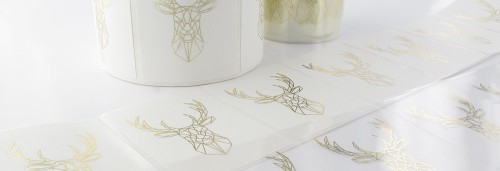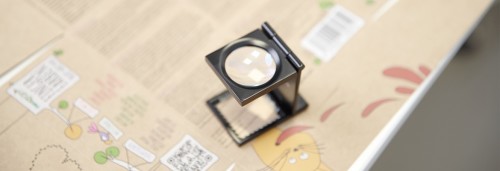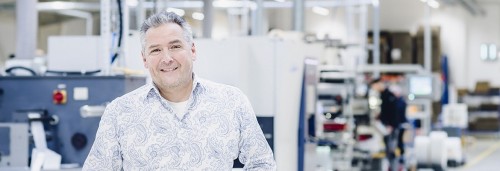Printing low migration labels - part 1
Would you have known?
Over 95% of all foodstuffs sold in Germany are already packaged. For reasons of cost and consumer demand, an ever-increasing proportion of this packaging has to make do without an additional film bag and with a small packaging sleeve. The space required for consumer, advertising and other information is taken up by food labels that are stuck directly onto the packaging. In these "slimmed-down" packages, food inevitably comes into contact with the unprinted inside of the packaging material. Here, there is a risk that microscopic substances in excess of a limit value from the packaging, and this includes the food labels, will get into the contents. This is known as migration. This migration also occurs with food labels if they are located directly on the packaging. This is particularly the case if no proven migration-free inks, coatings, films and papers are used for label printing.
WHAT ACTUALLY IS MIGRATION?
Label manufacturers who want to produce labels for sensitive products, such as food or medicines, have to meet very specific legal requirements. One of the most important criteria is the reduction of migration. "Migration (lat. migratio = 'migration' or 'relocation'), according to Wikipedia, is the term used in the field of chemistry to describe the migration of low-molecular substances to the surface of plastics or into surrounding substances."
But how does this migration take place? Which substances in food labels are meant and are these substances really so harmful? What can label manufacturers do to reduce migration to the prescribed minimum level when printing labels? How does migration occur during label printing?
The migration of toxicological substances from the packaging into the product can take place in three ways: directly through the printing substrate, by invisible set-off, or as a mass transfer via the gas phase.
- Printing inks, varnishes and label adhesives, like all other components of a label, are made up of a large number of substances. These include, for example, plasticizers, benzophenone, solvents or vegetable or mineral oils, which can be harmful to health if absorbed in larger concentrations via a foodstuff. Low-molecular-weight portions of these toxicological substances can penetrate directly through the substrate of a food label or packaging and thus pass on to the contents. This process is called "through-migration".
- Due to the production process, the side of the printing press facing the filling material is in contact with the printed side of the packaging. A transfer of colorless and thus invisible printing ink components to the food contact side is possible. This transition is known as set-off migration (or "invisible set-off").
- In addition, volatile substances can also transfer to the food via the gas phase in the air space of a package and lead to contamination, odor and taste impairment. This process is deliberately exploited in the production and packaging of some foods, for example to enhance their flavor or extend their shelf life.
You can find even more information on migration and co. in our article on general food informationThese articles may also interest you:

Label printing on foil and paper
Depending on the field of application and external conditions to which the labeled product is exposed during its use, the properties of the materials used in a label printing shop differ.

Blitzer when printing labels
After the labels have been printed, the adhesive labels are punched out of the roll of material using a cutting die or a laser punch. If the print motif is to end exactly on the edge of the label, small white edges may appear - the so-called flashes.

Label Printing Germany - Labelprint24
We, Labelprint24 are one of the leading German e-commerce specialists for labels and many other packaging products. In the printing industry, we have earned an image as one of Germany's most innovative label manufacturers.









